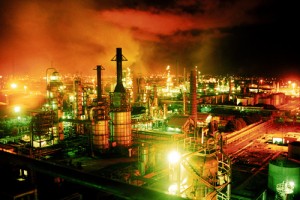Refiners are always looking for ways to reduce turnaround time for hydroprocessing units. With so many hydrotreaters and hydrocrackers scheduled for upgrades between now and 2018 to meet growing distillate demand while meeting regulatory specifications (Euro V, Tier 3, MARPOL 2020 ISO 0.5 wt% S, etc.), the cost benefits realized from even a half-day reduction during unit cool down justifies consideration of alternative approaches to accelerating reactor and catalyst cooling.

Refiners are upgrading hydrotreaters to meet multiple layers of regulations.
At the beginning of a turnaround, the cool down process precluding manway entry into the reactor for maintenance and catalyst replacement typically involves a two-phase cooling process. For example, upon shutting down a hydrotreater for emergency maintenance or planned revamp, feed is blocked and the furnace is shut down (in the first phase). The unit’s recycle gas compressor is used to circulate hydrogen-rich gas through the feed/effluent exchanger; then through the idle furnace and into the hydrotreater vessel(s) where the gas absorbs heat from the hot catalyst bed(s). However, a point of “diminishing return” is reached once the hot catalyst and reactor vessel internals are “cooled down” to about 200°F — obviously unsafe for manway entry. A further reduction in temperature requires a disproportionate amount of time, so a second phase with nitrogen injection is typically required to achieve a manway entry of about 80°F.
In order to hold larger volumes of catalyst for achieving near-zero sulfur limits while coping with all the contaminants seen in the 200+ feedstock blends marketed to the world’s refineries, hydroprocessing reactors are getting larger — not smaller. Herein lies the challenge to moving catalyst cooling off the critical path. Another option to the use of nitrogen cooling merits consideration, given the large catalyst volumes that need to be changed out sooner than later. Instead of using nitrogen in the second phase, Aggreko has developed an innovative, practical solution by circulating coolant through an Aggreko-provided, closed loop, chiller system designed to cool down the gas leaving the recycle gas compressor discharge in an Aggreko-provided heat exchanger, thereby cooling down the catalyst much faster than liquefied nitrogen.
The patented solution frees refiners from having to purchase liquid nitrogen and related considerations, such as the required vaporizer/feed system; tanker truck congestion during a period of peak turnaround activity; nitrogen exiting the flare system, etc. Moreover, many of the bespoke regulations affect venting of spent nitrogen through the flare. For example, venting nitrogen through the flare lowers the calorific value of the flare gas. This can cause problems since the calorific value of the flare gas is subject to regulatory limits designed to prevent snuffing out the flare.
A more detailed discussion on the implementation of this proprietary technology was recently published in Chiller & Cooling Best Practices (http://www.coolingbestpractices.com/industries/oil-and-gas/eliminating-catalyst-cool-down-critical-path-turnaround). Suffice it to say that more single reactor hydroprocessing units will be revamped with additional reactor vessels in order to separate beds of catalysts, each with different chemistries to deal with multiple process and quality objectives. Decreasing the cool down time in the event that maintenance is required and catalyst needs to be replaced could save refiners millions of dollars.







Leave a Reply
You must be logged in to post a comment.